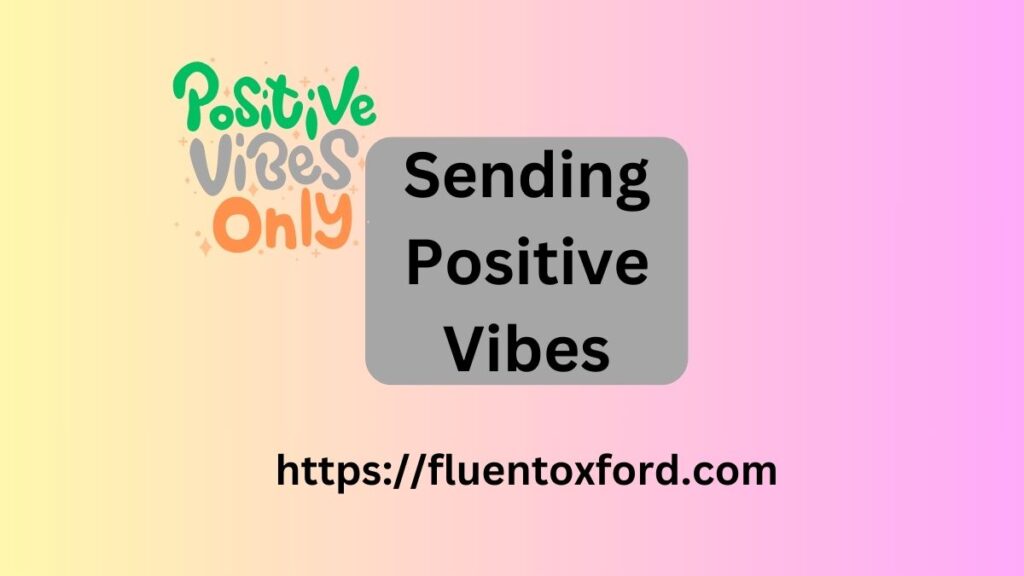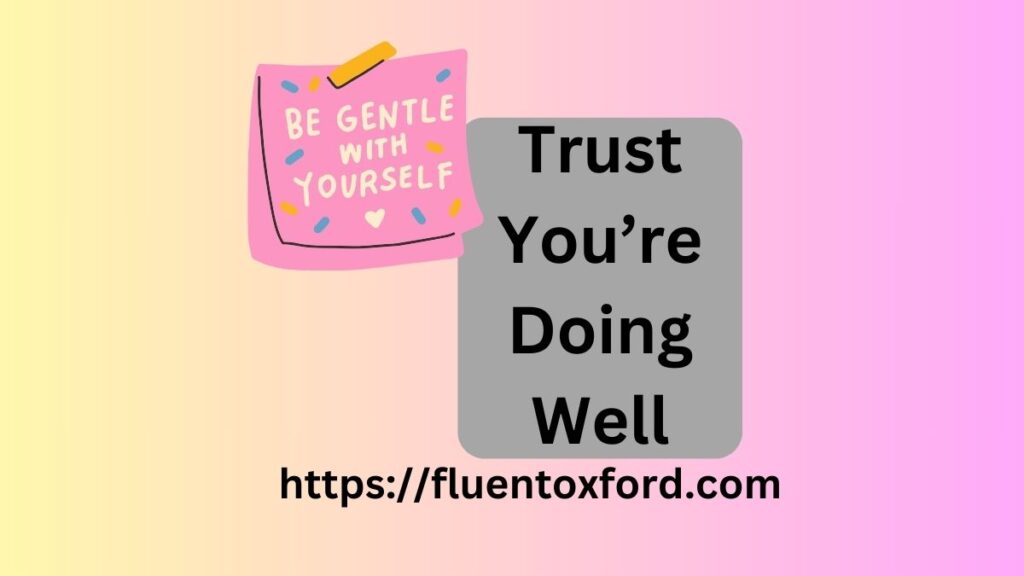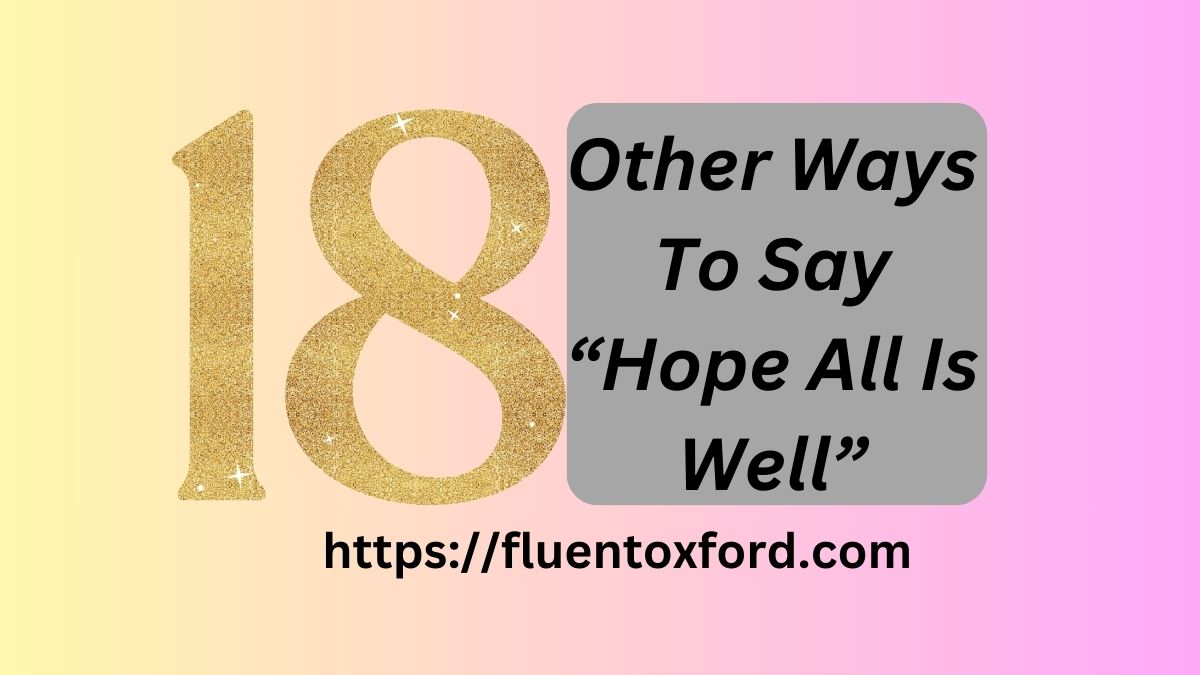18 Other Ways to Say “Hope All Is Well” refers to a selection of thoughtful alternatives to the common phrase often used at the beginning of emails, letters, or messages. This phrase is typically meant to show care, maintain a polite tone, and open a conversation on a positive note. However, overuse of “Hope all is well” can make messages feel repetitive or less genuine, especially in professional communication. That’s why exploring different ways to express the same sentiment can add warmth and originality to your writing.
Words carry power, and the way we begin a message sets the tone for the rest of the conversation. Using a fresh and creative greeting can instantly make your message more engaging and memorable. Whether you want to sound more casual, formal, or expressive, having a variety of opening lines makes a strong first impression.
Discovering 18 Other Ways to Say “Hope All Is Well” adds style and sincerity to your writing. These phrases can be used in different settings—professional emails, personal notes, or even social media messages. By choosing from the 18 Other Ways to Say “Hope All Is Well”, you show attention to detail and emotional intelligence, which can strengthen your connections and elevate your communication.
Why You Should Retire “Hope All Is Well” (Sometimes)
“Hope all is well” is one of the most common greeting expressions in email communication, especially in business settings. But it’s often used:
- Without considering the recipient’s current context
- As a filler phrase before the real message
- In a way that lacks personal engagement
From a semantic similarity and intent recognition perspective, the phrase rarely aligns with actual intent—and it doesn’t inspire a response.
When people receive dozens of emails daily, unique and authentic communication stands out.
How to Choose a Better Greeting

When crafting an alternative to “hope all is well,” consider the following:
- Your relationship with the recipient
- Tone (formal, casual, empathetic, friendly)
- Recent events in the recipient’s life (e.g., a promotion, a loss, moving, illness)
- The level of personalization you can add
18 Alternatives to “Hope All Is Well”
Each of these alternatives offers a different flavor of greeting. Whether you’re just checking in or aiming to send positive vibes, there’s a phrase that fits.
Thinking of You Today
This expression feels emotionally aware and meaningful. Use it when you want to show genuine care or empathy, especially if the recipient is going through something challenging.
Example:
Thinking of you today—just wanted to let you know I’m here if you need anything.
How Have You Been?
This question creates a conversational tone and invites a reply. It’s great for rekindling communication.
Example:
It’s been a minute—how have you been?
Hope You’re Doing Great
Similar to “hope all is well” but with more energy and positivity. It works well in upbeat, professional exchanges.
Example:
Hope you’re doing great and that Q2 has started off strong for your team!
Wishing You Well
Short, sincere, and appropriate for professional or personal contexts.
Example:
Wishing you well as you wrap up your final project for the semester.
Just Checking In
Casual and non-invasive. Great for soft follow-ups or ongoing relationships.
Example:
Just checking in to see how everything’s going and if there’s anything I can help with.
Hope You’re Having a Good Day
A simple phrase that fits when you’re writing quick messages.
Example:
Hope you’re having a good day! I wanted to follow up on last week’s email.
Sending Positive Vibes

A modern, slightly informal phrase full of good intentions.
Example:
Sending positive vibes your way as you prep for your big presentation tomorrow.
Hope Life Is Treating You Well
Sincere and friendly, this phrase works well in both professional and personal conversations.
Example:
It’s been a while—hope life is treating you well and that your new role is everything you hoped for.
How’s Everything Going?
Open-ended and conversational, this is a great choice for checking in on someone’s life or work.
Example:
How’s everything going on your end? I’d love to hear an update.
Just Wanted to Reach Out
A friendly way to initiate a conversation, especially if it’s been a while.
Example:
I just wanted to reach out and see how things have been since our last call.
I Hope You’re Thriving
Uplifting and inspiring—this phrase implies success, growth, and good energy.
Example:
I hope you’re thriving in your new city! It looks like an exciting chapter.
Hope This Message Finds You in Good Spirits
Formal and elegant, suitable for professional and diplomatic communications.
Example:
Hope this message finds you in good spirits. I’m writing to invite you to our annual summit.
I’ve Been Meaning to Reach Out
This phrase adds a personal and honest touch, especially if the message is long overdue.
Example:
I’ve been meaning to reach out—you crossed my mind last week when I passed your old office.
Hope You’re Safe and Well
Especially relevant in uncertain times, this greeting is sensitive and kind.
Example:
Hope you’re safe and well—I know this season has been tough on everyone.
Trust You’re Doing Well

Professional and confident. This is great for formal intros or business cold emails.
Example:
Trust you’re doing well. I’m reaching out to follow up on our earlier discussion.
Hope You’re Finding Time to Recharge
This shows empathy, especially for busy professionals or during burnout seasons.
Example:
Hope you’re finding time to recharge—we all need those breaks.
Hope Things Are Going Smoothly
Simple and neutral. Good for checking in on projects, plans, or updates.
Example:
Hope things are going smoothly with the onboarding process. Let me know if any issues pop up.
Here’s Hoping All Is Good on Your End
Informal and friendly. Feels more natural than the original phrase.
Example:
Here’s hoping all is good on your end. I’d love to catch up when you’re free.
Quick-Reference Table: Alternatives at a Glance
| Alternative Phrase | Tone | Best For | Response Expected |
| Thinking of You Today | Warm | Personal messages | Yes |
| How Have You Been? | Friendly | Reconnecting conversations | Yes |
| Hope You’re Doing Great | Upbeat | Professional emails | Optional |
| Wishing You Well | Neutral | Personal/professional notes | No |
| Just Checking In | Casual | Follow-ups | Yes |
| Hope You’re Having a Good Day | Positive | Quick communication | Optional |
| Sending Positive Vibes | Encouraging | Personal support | No |
| Hope Life Is Treating You Well | Friendly | Semi-formal greetings | Yes |
| How’s Everything Going? | Conversational | Ongoing relationships | Yes |
| Just Wanted to Reach Out | Intentional | Reconnecting | Yes |
| I Hope You’re Thriving | Aspirational | Professional success updates | Yes |
| Hope This Message Finds You in Good Spirits | Formal | Business introductions | No |
| I’ve Been Meaning to Reach Out | Personal | Long-overdue check-ins | Yes |
| Hope You’re Safe and Well | Empathetic | Difficult times | Optional |
| Trust You’re Doing Well | Professional | Initial business contact | No |
| Hope You’re Finding Time to Recharge | Supportive | Busy professionals | Yes |
| Hope Things Are Going Smoothly | Neutral | Project updates | Yes |
| Here’s Hoping All Is Good on Your End | Friendly | Informal emails | Yes |
Key Points
Replacing “hope all is well” is a small tweak that can lead to better responses, stronger rapport, and more meaningful communication.
Use these alternatives when you want to:
- Personalize your outreach
- Show genuine concern or interest
- Match the emotional tone of your message
By using varied greetings, you increase your message’s impact and make your voice stand out—especially in a world where inboxes are overloaded with robotic phrases.
“People will forget what you said, but they will never forget how you made them feel.” — Maya Angelou
Choose wisely, write warmly, and speak like a human.
Conclusion
Using the 18 Other Ways to Say “Hope All Is Well” can help you sound more personal and thoughtful in your messages. These new phrases bring variety and show that you care enough to make your words fresh and meaningful. Whether you’re writing to a friend, coworker, or client, choosing the right words can make your message feel warm and sincere.
Adding the 18 Other Ways to Say “Hope All Is Well” to your writing toolkit makes your communication more creative. It helps you avoid sounding too formal or too plain. With these options, you can better match your tone to the person you’re writing to. Try using different greetings and see how much more engaging your messages become. A small change in words can make a big difference in how your message is received.
FAQs
What is a more professional alternative to “Hope all is well”?
Use “Trust you’re doing well” or “Hope this message finds you in good spirits” for formal emails—they’re polished and appropriate for business settings.
Is “Hope all is well” outdated in emails?
Not exactly, but it’s overused and impersonal. More tailored greetings are often better received and improve response rates.
Which alternatives work best for cold outreach?
Phrases like “I hope you’re doing great,” “I trust you’re doing well,” or “I just wanted to reach out” strike a good balance of warmth and professionalism.
Can I use casual alternatives in professional emails?
Yes, if the relationship is established. Options like “How have you been?” or “Hope you’re having a good day” can feel more genuine without crossing boundaries.
Do personalized greetings actually improve engagement?
Yes. According to a 2024 HubSpot report, personalized email openings see 17% higher response rates compared to generic greetings.

As an admin at Fluent Oxford, Maida Queen is the driving force behind our vibrant learning community. With a deep passion for English language education, she ensures that our platform remains a dynamic, engaging, and supportive space for learners worldwide.
Maida expertly manages content, assists users with their grammar and fluency queries, and fosters an interactive environment where learning feels effortless and enjoyable. Whether you need guidance, motivation, or just a friendly face in the Fluent Oxford community, Maida is always there to help you reach your English language goals.








